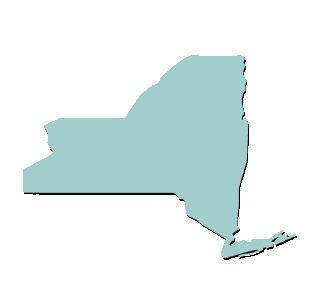New York in 2012 was estimated by AIR Worldwide to have an insured value of coastal properties of $2.92 trillion, up from $1.9 trillion in 2004. Florida's 2012 figure was $2.86 trillion, up from $1.94 trillion in 2004, the catastrophe modeling firm estimated.
"Metropolitan New York had always been number two to Florida," said Sam Miller, executive vice president of the Florida Insurance Council. "You have number one and number two and then you have everybody else billions of dollars down below that."
The total insured value of all coastal properties on the East and Gulf coasts in 2012 was $10.6 trillion, which is 20% higher than in 2007 and 48% higher than in 2004, according to AIR. Behind New York and Florida is Texas, with an estimated insured coastal exposure of $1.17 trillion. The figures include the cost to replace a structure and its contents, including additional living expenses and business interruption coverage for all residential and commercial property that is or can be insured.
The figures highlight the need for increased flood insurance penetration in the Northeast, but particularly in New York where it is only about 10%, said Ellen Melchionni, president of the New York Insurance Association. She noted that four of six states with the highest insured coastal exposure are in the Northeast. Those states are Massachusetts, New Jersey and Connecticut.
"I don't think about (New York) as a coastal state, but 62% of the total insured value in the state is in coastal areas so clearly there is a concentrated amount of high-value property in downstate New York," Melchionni said. "It's puzzling to us in the industry why more homeowners --- especially in New York --- don't invest in flood insurance."
In contrast to Florida, New York has only seven coastal counties and 127 miles of coast, according to the 2010 census, which varies depending on how its measured. By the same metric, Florida has 1,350 miles of coast.. However, the actual threat to Florida might be greater than just the coastal counties, Miller said, noting the 2004 hurricane season showed no area of the state was immune to damage. That was the year that four hurricanes struck Florida, including Hurricane Charley, which swept across central Florida.
"Of course, New York is less likely to receive hurricane damage, but last year it received more hurricane damage than any other state as a result of Sandy," said Robert Hartwig, president of the Insurance Information Institute, during a recent presentation.
Hurricane Sandy on the evening of Oct. 29 slammed into the coasts of New York and New Jersey. The storm racked up insured losses of $18.6 billion --- not counting National Flood Insurance Program losses --- making it the third most expensive hurricane.
Dick Poppa, president and chief executive officer of the Independent Insurance Agents & Brokers of New York, said his group increasingly hears about insurance companies not renewing homeowners business in coastal areas of the state and it generally becoming a more difficult marketplace.
"We're certainly hearing that underwriting is becoming much more difficult and what's somewhat new ... is that it's moving on commercial lines and personal lines," Poppa said. "After the experience with Sandy, the modeling firms are finding that in many cases they undervalued the exposures at the carrier level." Rising property values could be contributing to the increase in the coastal exposure estimate, Poppa said. "A building that's there, just by the nature of it is increasing in value." Another possibility is new buildings adding new exposures to the coastal areas of the state, he said. "Upstate New York is so much less of an economic engine than Long Island or Manhattan," Poppa said. "It makes it more and more difficult for the carriers to have a spread of risk and a spread of exposure."
Even though housing market values declined starting in about 2008, replacement values did not, which is what largely makes up AIR's estimate. The largest single factor increasing the hurricane risk of property insurers is the number and value of exposed properties on the Gulf and East coasts, AIR said.
"We are still seeing building along the coast in Florida and now it's starting to be the panhandle," Miller said. "I don't doubt that you [will] continue to see development and redevelopment on the coast." Miller added that southeast Florida is also very developed, but southwest Florida, which is mostly occupied by the Everglades National Park, is not. Growth in Florida's coastal insured values over the past five years reinforces that Florida's property market has a high risk of producing large losses because of its coastal concentration.
"We do have these incredible nightmare storms that are in our future," Miller said. "People sometimes don't believe that, but they will someday. It's going to be massive because of the concentrated exposure we have."













 Florida for many years was the preeminent state for total insured value of
Florida for many years was the preeminent state for total insured value of